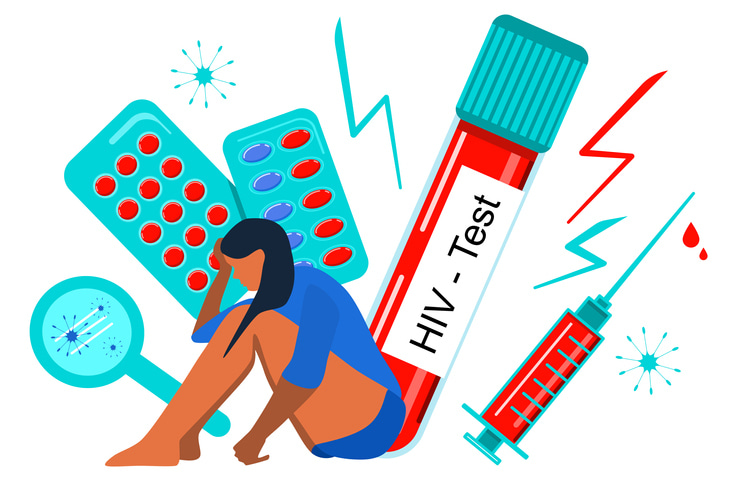Wondering what are STIs? We got you covered!
Sexually Transmitted Infections (STIs), often referred to as sexually transmitted diseases (STDs), are a group of infections that spread primarily through sexual contact. Understanding STIs is essential for maintaining overall health and well-being, as these infections can lead to a range of complications when left untreated. This blog post will explore the different types of common STIs, along with symptoms, cures, and preventive measures available.
Types of STIs
i) Gonorrhea and Chlamydia:
Gonorrhea and Chlamydia are both bacterial infections. They affect the genital and reproductive organs and often show little to no symptoms. However, they can cause complications related to fertility.
Some symptoms to watch out for are –
- Discharge from the vagina or penis.
- Painful urination or the need to urinate more often.
- Pain in the pelvis or abdomen.
- Burning or itching in the vaginal area.
- Redness or swelling of the vulva.
- Bleeding between menstrual periods.
- Swollen or enlarged lymph nodes.
Antibiotics can treat both infections and doctors recommend follow-up testing.
ii) Human Papillomavirus (HPV):
Human Papillomavirus (HPV) is a viral infection that generally has no symptoms. However, some types of HPV can cause genital warts. Certain types of HPV can cause abnormal changes in the cervix that may even lead to the formation of cancers. It is linked to cancer of the anus, vulva, vagina, penis, head, and neck. There is no specific antiviral treatment for HPV; the emphasis is on symptom management and complication prevention, including the treatment of genital warts through methods like topical treatments, freezing, or surgical removal, while HPV vaccines are accessible to prevent specific HPV infections and related cancers.
iii) Syphilis:
Syphilis is caused by Treponema pallidum bacteria, which enters the body through a cut in the skin or through contact with a partner’s syphilis sore. This sore commonly occurs on the vulva, vagina, anus, or penis – thus syphilis is most often spread through sexual contact. If not treated, syphilis can cause long-term health problems.
progresses through stages with distinct symptoms and can lead to severe health problems if untreated. Its symptoms vary by stage:
- Primary stage: Painless sore at the infection site.
- Secondary stage: Rash on the palms and soles, flat warts on the vulva, and flu-like symptoms.
- Latent infection: No symptoms, but the infection is still present.
Syphilis is treated with antibiotics, typically penicillin.
iv) Genital Herpes:
Genital Herpes is caused by the herpes simplex virus (HSV) and may result in painful sores in the genital or oral area, with the potential for recurrences.
Herpes infection can lead to the development of painful sores. Upon initial infection, individuals with herpes may experience flu-like symptoms. These symptoms may include the appearance of small, fluid-filled blisters in the genital, buttock, or other regions. These blisters often occur in clusters and are accompanied by swelling and tenderness in the surrounding area. Typically, when symptoms do manifest, they become evident approximately 2 to 10 days following the virus’s entry into the body.
There is no cure for genital herpes, but the infection can be managed.
Antiviral medications, such as acyclovir or valacyclovir, can shorten the duration and severity of outbreaks. Daily antiviral medication (suppressive therapy) can reduce the frequency of outbreaks and the risk of transmission to partners.
v) Human Immunodeficiency Virus (HIV):
HIV, which stands for Human Immunodeficiency Virus, is the virus responsible for causing Acquired Immunodeficiency Syndrome (AIDS). HIV is primarily transmitted from person to person through contact with infected bodily fluids, such as semen, vaginal fluid, or blood.
Once HIV enters the body, it targets and weakens the immune system. As the immune system becomes compromised, it loses its ability to effectively combat diseases and infections. The diagnosis of AIDS occurs when a person with HIV experiences illnesses that the immune system would typically be capable of fighting off, including conditions like pneumonia, specific types of cancer, and various infections.
Some individuals may experience flu-like symptoms within 2 to 4 weeks of contracting the virus. However, others may not display any noticeable symptoms until the infection has progressed to a more advanced stage. The only way to determine if you have HIV is to undergo testing.
While there is no cure for HIV infection, it can be effectively managed with medications. There are medications available that can help individuals with HIV maintain good health over an extended period. It’s crucial to start treatment as early as possible, as this improves long-term health outcomes. Early treatment also reduces the risk of transmitting the virus to sexual partners.
If you are not currently infected with HIV but are at high risk of contracting it, there are preventive measures available. One such measure is known as pre-exposure prophylaxis (PrEP), which involves taking a daily pill or receiving injections every 2 months. When used in combination with other preventive practices like condom usage, PrEP can significantly reduce the risk of contracting HIV.
vi) Other STIs (Trichomoniasis, Hepatitis B and C):
Trichomoniasis is caused by a microscopic parasite, while Hepatitis B and C are viral infections affecting the liver.
Trichomoniasis is treated with antibiotics, typically metronidazole or tinidazole.
Hepatitis B can be prevented with vaccination; there is no cure, but some cases resolve on their own.
Hepatitis C is treated with antiviral medications; chronic cases may require ongoing treatment and monitoring.

Methods for Preventing STIs:
Regular Testing: Consistently undergo STI testing as part of your sexual health routine.
Contraceptive Use: Use reliable forms of contraception such as condoms and dental dams to minimize the risk of transmission.
Vaccination: Consider getting vaccinated against hepatitis B and HPV to further protect yourself.
To maintain a healthy and safe sex life, prioritize open and honest communication with your sexual partners. It is essential to seek professional medical advice when needed and strictly adhere to prescribed treatments for STIs. Furthermore, informing your sexual partners about your STI status and encouraging them to undergo testing and treatment is vital in effectively managing these infections and reducing their spread.

CONCLUSION
The battle against STIs extends beyond the confines of medical facilities. It demands open conversations about sexual health, access to testing and treatment, and a commitment to practising safe sex. More importantly, it requires confronting the stigma that often surrounds these conversations and fostering an environment where one feels comfortable seeking help when needed. By raising awareness, increasing knowledge, and promoting responsible and informed sexual behaviour, we can work towards a future where STIs are not met with fear or shame but with understanding, empathy, and effective prevention.
The fight against STIs is not just a medical one; it’s a societal one. The strides we make in this field have the potential to impact countless lives, ensuring a healthier, more informed, and more compassionate world for all.
Author

